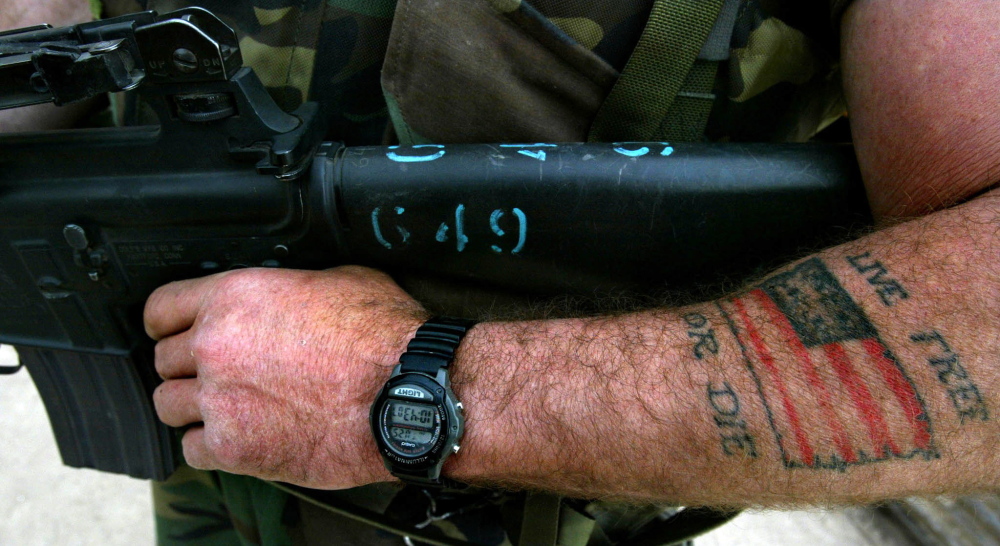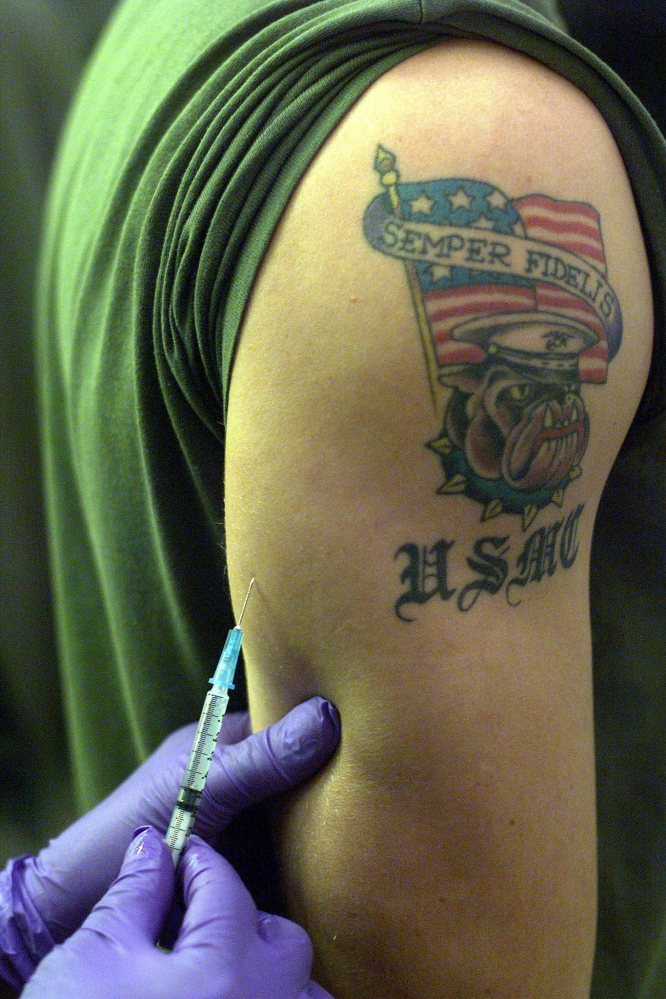CHICAGO — Uncle Sam still wants you – just not as heavily inked.
More than three months after the Army implemented a more stringent tattoo policy, recruiters say they are the ones feeling the pinch.
“It certainly makes our job a little more challenging,” said Staff Sgt. Carrington Oliver of the South Holland recruiting station in Chicago.
The new regulations, which went into effect around April 1, mean turning away about 10 to 12 potential recruits at his office each month, Oliver said.
Still, he endorsed the changes. “It’s all about projecting a more professional image.”
The tighter rules ban body art on the head, face, neck, wrists, hands and fingers. Soldiers are allowed a maximum of four visible tattoos below the elbow or knee, but they must be smaller than the wearer’s hand, which means that “sleeves” are also prohibited. (Extremist, sexist and racist tattoos have always been taboo.)
The Army now has the toughest tattoo policy of all the branches of the service. It’s not the first time that the top brass has turned thumbs down on being overly tatted up, said Wayne Hall, an Army spokesman at the Pentagon.
However, following the 9/11 attacks, when more recruits were needed in Iraq and Afghanistan, the Army took a more lenient stance.
But the Army decided it was time to reassess. Existing soldiers who are non-compliant with the revised policy are grandfathered in.
“Any time you make something tougher, you’re going to see a reaction. But, ultimately, it’s more rewarding because we’re bringing on board the highest quality soldiers possible,” Hall said.
The new policy is included in the Army’s publication on proper appearance in uniform. The 56-page publication spells out every possible fad and fashion – from tongue bifurcation to ear gauging to dental ornamentation (all of which are outlawed).
In South Holland, military hopefuls typically respond by promising to have their conspicuous body art removed, Oliver said.
Send questions/comments to the editors.




Success. Please wait for the page to reload. If the page does not reload within 5 seconds, please refresh the page.
Enter your email and password to access comments.
Hi, to comment on stories you must . This profile is in addition to your subscription and website login.
Already have a commenting profile? .
Invalid username/password.
Please check your email to confirm and complete your registration.
Only subscribers are eligible to post comments. Please subscribe or login first for digital access. Here’s why.
Use the form below to reset your password. When you've submitted your account email, we will send an email with a reset code.